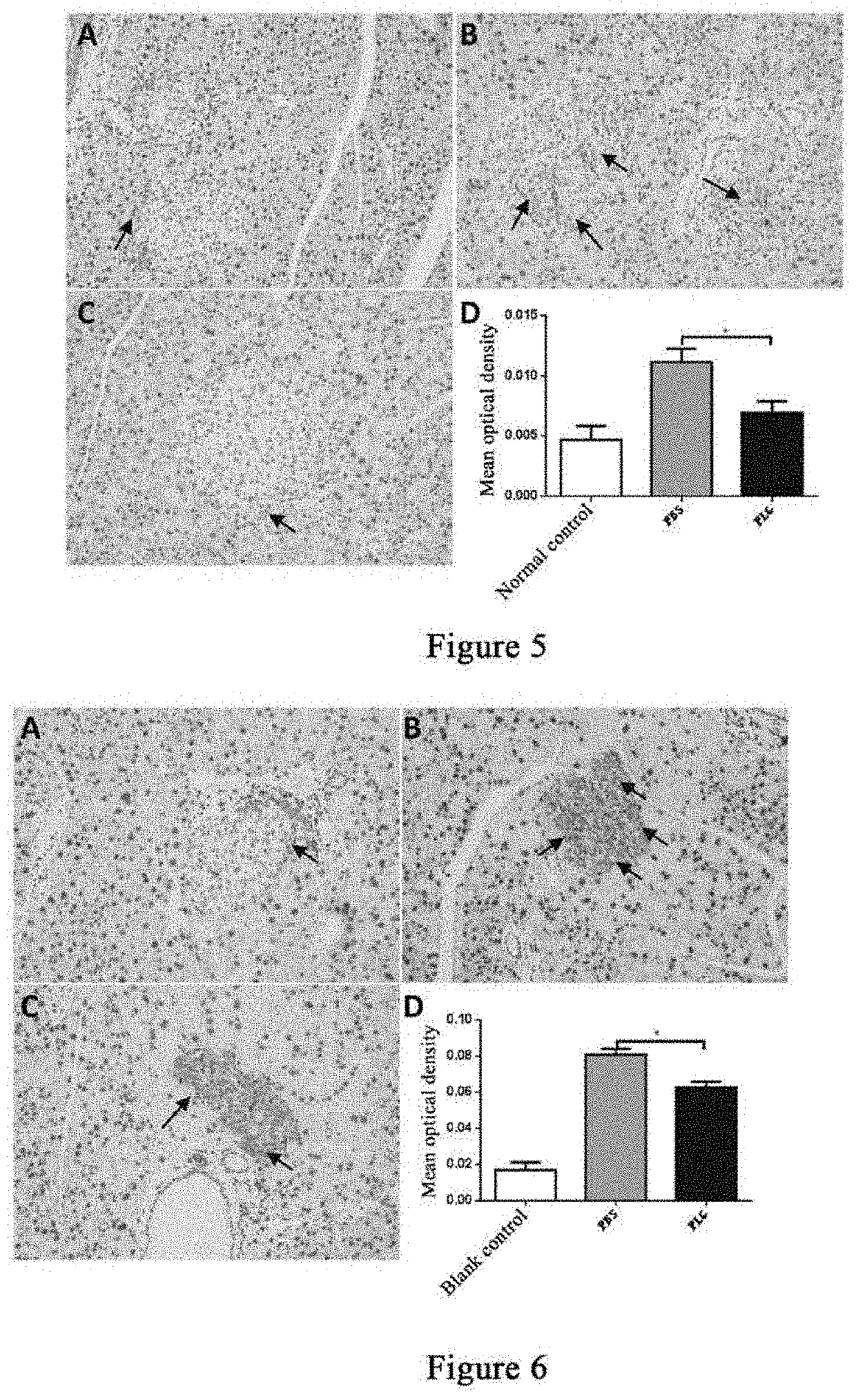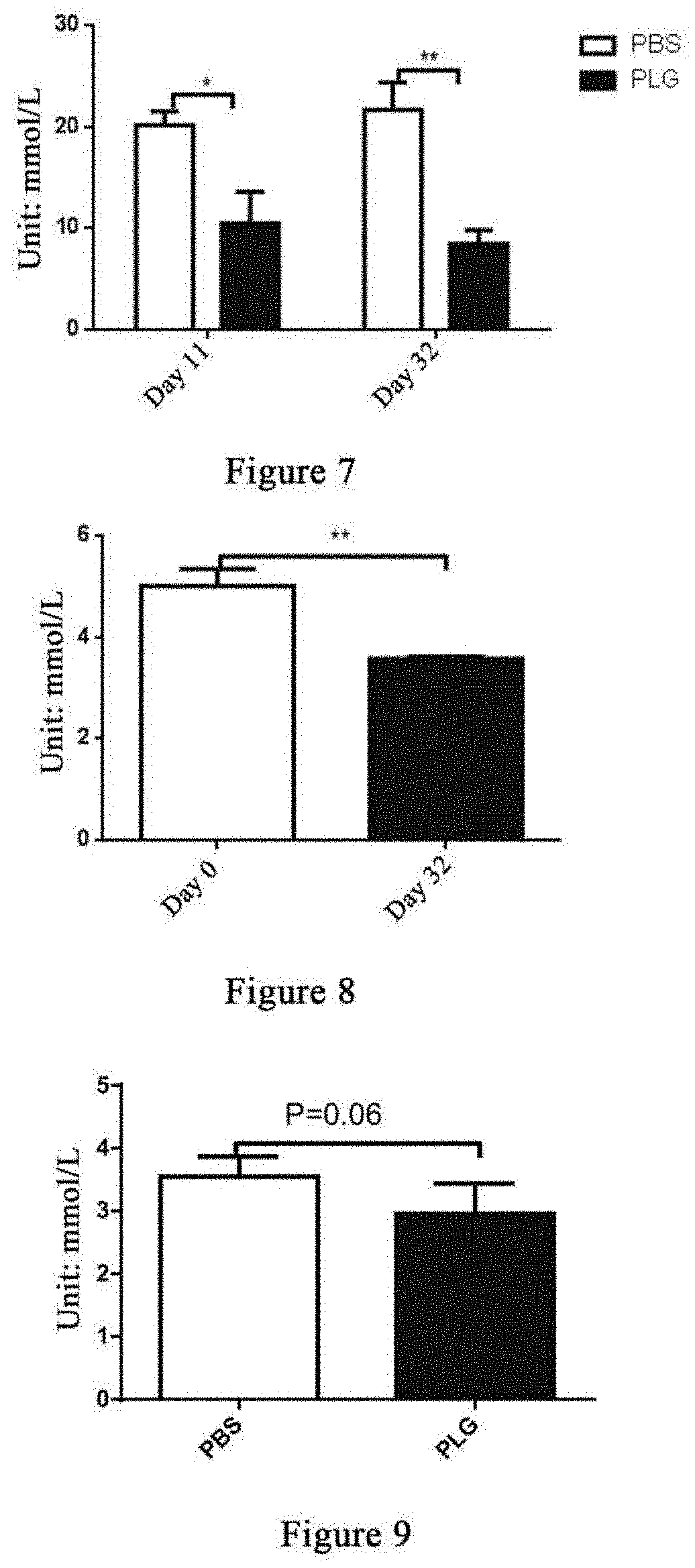Method for regulating and controlling glp-1/glp-1r and drug
a technology of glp-1r and glp-1r, which is applied in the field of plasminogen, can solve the problems of insufficient spatial learning and memory ability
- Summary
- Abstract
- Description
- Claims
- Application Information
AI Technical Summary
Benefits of technology
Problems solved by technology
Method used
Image
Examples
example 1
en Promotes Expression of GLP-1 in Pancreatic Islet of 14- to 15-Week-Old Diabetic Mice
[0139]Twelve 14- to 15-week-old male db / db mice were weighed and randomly divided into two groups based on the body weight, a group of 6 mice administered with plasminogen and a control group of 6 mice administered with vehicle PBS, on the day the experiment started that was recorded as day 0.
[0140]Starting from the 1st day, plasminogen or PBS was administered. The group administered with plasminogen was injected with human plasminogen at a dose of 2 mg / 0.2 mL / mouse / day via the tail vein, and the control group administered with vehicle PBS was injected with an equal volume of PBS via the tail vein, both lasting for 28 consecutive days. On day 29, the mice were sacrificed, and the pancreas was taken and fixed in 4% paraformaldehyde. The fixed pancreas tissues were paraffin-embedded after dehydration with alcohol gradient and permeabilization with xylene. The thickness of the tissue sections was 3 μ...
example 2
en Promotes Expression of GLP-1 in Pancreatic Islet of 23- to 25-Week-Old Diabetic Mice
[0143]Thirteen 23- to 25-week-old male db / db mice were weighed and the db / db mice were randomly divided into two groups based on the body weight, a group administered with plasminogen (7 mice) and a control group administered with vehicle PBS (6 mice), on the day the experiment started that was recorded as day 0. Starting from the 1st day, plasminogen or PBS was administered. The group administered with plasminogen was injected with human plasminogen at a dose of 2 mg / 0.2 mL / mouse / day via the tail vein, and the control group administered with vehicle PBS was injected with an equal volume of PBS via the tail vein, both lasting for 28 consecutive days. On day 29, the mice were sacrificed, and the pancreas was taken and fixed in 4% paraformaldehyde. The fixed pancreas tissues were paraffin-embedded after dehydration with alcohol gradient and permeabilization with xylene. The thickness of the tissue s...
example 4
en Reduces Proliferation of Pancreatic Islet α Cells, Restores Normal Distribution of Pancreatic Islet α Cells, and Lowers Secretion of Glucagon in 24- to 25-Week-Old Diabetic Mice
[0147]Eleven male db / db mice and five male db / m mice, 24-25 weeks old, were included, wherein the db / db mice were weighed and then randomly divided into two groups, a group of 5 mice administered with plasminogen and a control group of 6 mice administered with vehicle PBS, and the db / m mice were used as a normal control group. The first day of administration was set as day 1, and starting from this day, plasminogen or PBS was administered. The group administered with plasminogen was injected with human plasminogen at a dose of 2 mg / 0.2 mL / mouse / day via the tail vein, and the control group administered with vehicle PBS was injected with an equal volume of PBS via the tail vein or without any liquid, both lasting for 31 consecutive days; and the mice in the normal control group were not administered. On day ...
PUM
| Property | Measurement | Unit |
|---|---|---|
| Fraction | aaaaa | aaaaa |
| Fraction | aaaaa | aaaaa |
| Fraction | aaaaa | aaaaa |
Abstract
Description
Claims
Application Information
 Login to view more
Login to view more - R&D Engineer
- R&D Manager
- IP Professional
- Industry Leading Data Capabilities
- Powerful AI technology
- Patent DNA Extraction
Browse by: Latest US Patents, China's latest patents, Technical Efficacy Thesaurus, Application Domain, Technology Topic.
© 2024 PatSnap. All rights reserved.Legal|Privacy policy|Modern Slavery Act Transparency Statement|Sitemap



